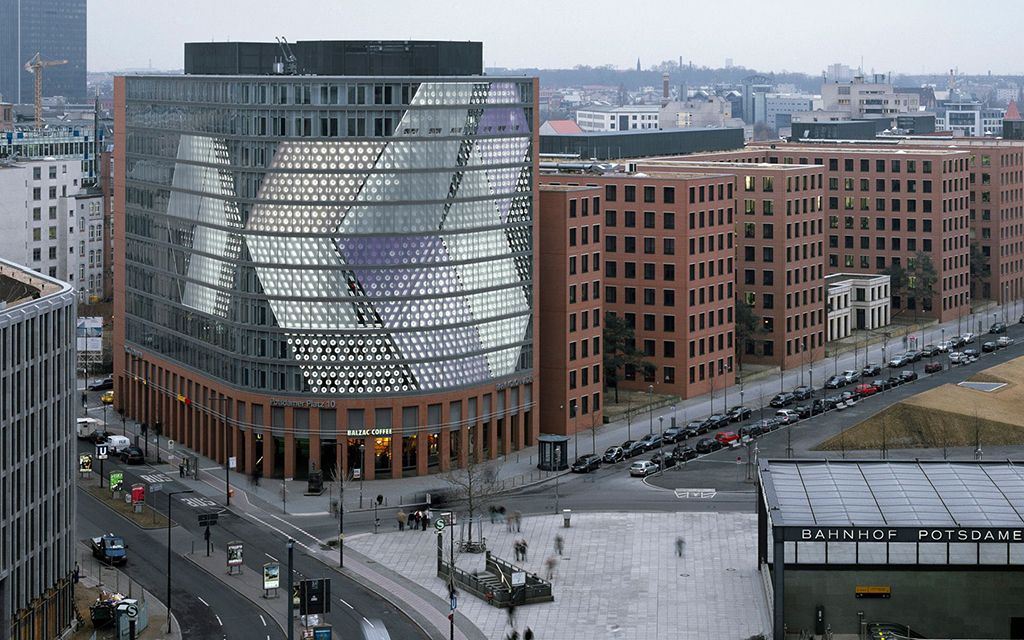SPOTS
-
Spots was a project realized on extremely short notice, commissioned in February and inaugurated in November 2005. The new façade reacted specifically to the architecture and urban surroundings while continuing research on topics begun in Graz with Kunsthaus.
Both projects investigate the scale, size and resolution of media elements in an urban and architectural context as well as the general relation between medium, message, material and location.
The building’s skin in Berlin goes a few steps further – introducing a shifted light/pixel grid using different types of lamps as well as a distinct daytime appearance. SPOTS isn’t a neutral carrier medium at all.
The installation was in equal parts a medium and a separate structure, whose idiosyncratic matrix interfered with any content displayed. This “object character” is especially important, because the matrix of lamps was also visible by day.
This character was created by the irregular outline of the display itself, which partially dissolved the physical façade of the architecture, as well as its division into two separate screens and the different types of lamps, which were arranged in a large graphic pattern with a 30 degree tilt and which were detailed as autonomous individual objects.
The installation also involved a large-scale affixing of custom made silk screen printed colored foil with varying transparency to parts of the installation surface. 1,014 ring-shaped and 760 bar-shaped fluorescent light tubes served as pixels, forming a giant low-resolution, grey scale matrix. A central computer individually controlled the brightness of every single light. As a result, movies, graphics, and animation sequences could be displayed on the façade as moving luminous images transforming the building’s shell into a communicative membrane. The aim was for the media installation to continue the structural logic defined by the architecture instead of concealing or contradicting it. On the one hand, the considerable overall size of the installation became economically feasible by reducing the resolution and doing without color. But on the other hand—and more importantly—giving this media installation the right resolution, size, and dimension was a necessary prerequisite for acting on the architectural scale of the surrounding Potsdamer Platz quarter.
Photo credits: Realities:united
1870 Projects






